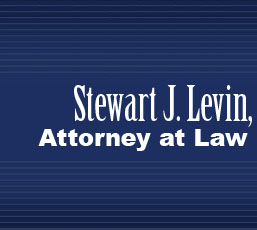DAMAGES RECOVERABLE IN WRONGFUL DEATH AND SURVIVAL ACTIONS
Wrongful Death Actions:
Code of Civil Procedure section 377.60 gives the heirs of the decedent the right to recover damages for wrongful death. “[D]amages may be awarded that, under all the circumstances of the case, may be just, but may not include damages recoverable under section 377.34.” (Code of Civil Procedure section 377.61.) Wrongful death damages are usually measured in terms of the “value of the benefits the heirs could reasonably expect to receive from the decedent if he or she had lived.” (148 Cal.App.3d 512, 520.) Those benefits include loss of “love, companionship, comfort, affection, society, solace or moral support...or any loss of... physical assistance in the operation or maintenance of the home.” (Krouse v. Graham (1977) 19 Cal.3d 59, 67.)
Recoverable Damages:
1. Financial contributions expected from the decedent but lost by the decedent's death. ( Carr v. Pacific Telephone Co. (1972) 26 Cal.App.3d 537, 545.)
2. Value of lost services, whether or not someone is hired to perform those services. (Torres v. City of Los Angeles (1962) 58 Cal.2d 35, 54; Swails v. General Electric Co. (1986) 264 Cal.App.2d 82, 87.)
3. Society, comfort, care, protection, companionship, and consortium. ( Krouse v. Graham, supra, 19 Cal.3d at 67.)
4. Training and advice, nurturing, moral and physical instruction, discipline. ( Syah v. Johnson (1966) 247 Cal.App.2d 534, 547.)
5. Funeral and burial expenses. ( Francis v. Sauve (1963) 222 Cal.App.2d 102, 124.)
6. Prospective gifts from decedent. ( Stathos v. Lemich (1963) 213 Cal.App.2d 52.)
Non-Recoverable Damages:
1. Detriment suffered by the decedent prior to death -- i.e., an heir cannot recover damages for pain, suffering, and anguish suffered by the decedent. ( Parsons v. Easton (1921) 184 Cal. 764, 770.)
2. Aggravation of a pre-existing condition of decedent. ( Vecchione v. Carlin (1980) 111 Cal.App.3d 351, 358.)
3. Medical expenses incurred before the decedent's death. ( Gallup v. Sparks-Mundo Engineering Co. (1954) 43 Cal.2d 1, 10.) However, a person, such as a spouse, parent, or guardian who actually paid or became obligated to pay expenses for medical treatment given the decedent before he died has a cause of action to recover the value of those expenditures. ( Follansbee v. Benzenberg (1954) 122 Cal.App.2d 466, 476.)
4. Grief, sorrow, anguish, emotional distress, mental suffering. ( Krouse v. Graham, supra, 19 Cal.3d at 70.)
5. Decedent's prospective savings or expectancy of inheritance. ( Bradford v. Brock (1934) 140 Cal.App. 47.)
6. Punitive damages, even if the defendant's conduct was willful and wanton. ( Doak v. Superior Court (1968) 257 Cal.App.2d 825, 834.)
Thus, the general rule in California is that the heirs of the decedent may recover for the pecuniary loss of present and probable future benefits from the decedent of any kind, including the present value of future contributions, the value of any personal service, advice, or training that would probably have been given, and the value of the deceased's society and companionship. (Witkin, 6 Summary of California Law (9th Ed.) “Torts,” page 903 §1423.) By definition, this would not include medical expenses or loss of earnings that the wrongful death plaintiff has incurred (i.e., they are not benefits that would have been received from the decedent).
In an action for wrongful death due to medical malpractice, Civil Code section 3333.2 (part of the MICRA legislation enacted in 1990) imposes a limit of $250,000 on general damage recoveries. This single limit on general damages applies jointly to all of the heirs. Section 3333.2 provides that “in no action shall the amount of damages for noneconomic losses exceed two hundred fifty thousand dollars ($250,000).” As explained by the court in Yates v. Pollock (1987) 194 Cal.App.3d 195, 200-201:
“Since the Legislature was obviously aware that ‘case precedent has consistently held “only one action [can] be brought for the wrongful death of a person thereby preventing multiple actions by individual heirs and the personal representative” ...’ and that ‘the cause of action for wrongful death has been consistently characterized as “a joint one, a single one and an indivisible one” ...’ ( Canavin v., supra, 148 Cal.App.3d at p. 529; italics in original; Cross v. Pacific Gas & Elec. Co. (1964) 60 Cal.2d 690, 694 [36 Cal.Rptr. 321, 388 P.2d 353]), we can but conclude its use of the word ‘action’ in section 3333.2 represents its conscious decision to limit the total recovery for noneconomic loss in such suits to $250,000.”
This is in contrast to non-wrongful death actions where there may be multiple MICRA caps among multiple plaintiffs. ( Atkins v. Strayhorn (1990) 223 Cal.App.3d 1380.)
We use university professors [in Engineering, Medicine, and Economics] as expert witnesses to prove Wrongful Death for your case and to maximize your monetary recovery.
No stone is left unturned. All legal theories of recovery are aggressively used for your benefit.
Mr. Stewart Levin, attorney at law, has successfully resolved numerous cases involving Wrongful Death. To arrange a Free Consultation with Mr. Stewart Levin, please call 310.777.7550 or click here to send Mr. Levin an email.
The initial consultation is always free.
No Recovery-No Fee
Back to Practice Areas

